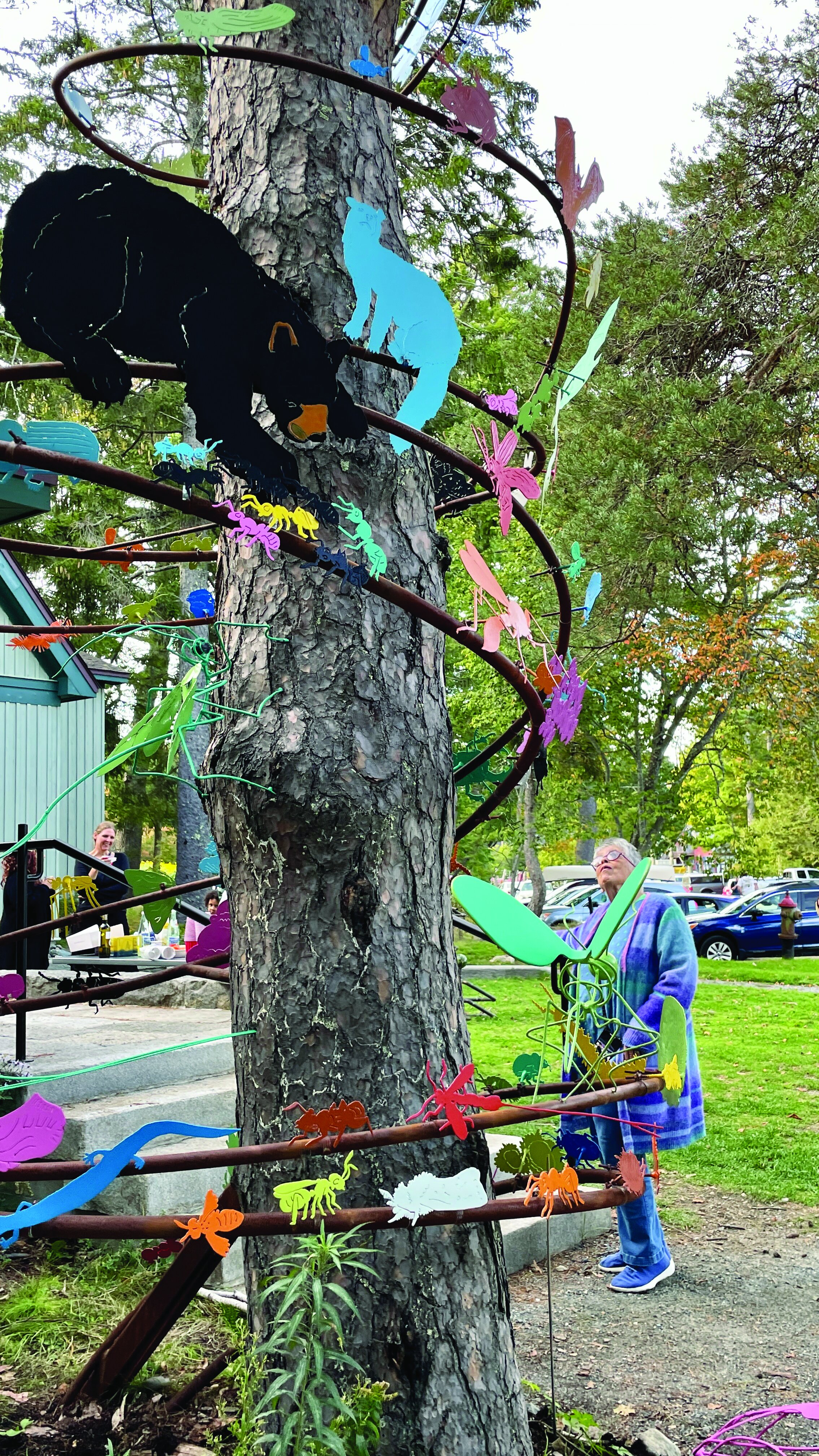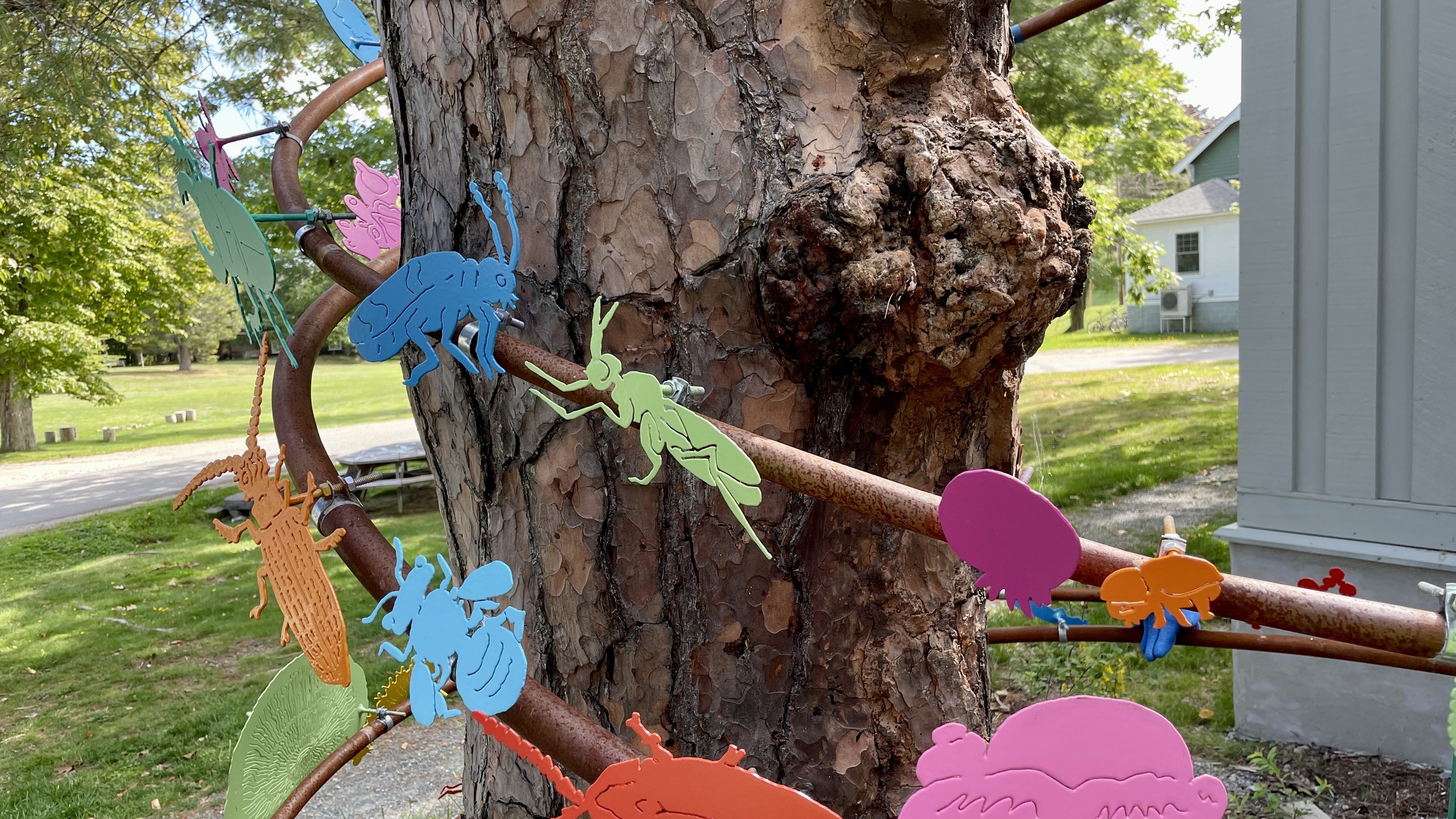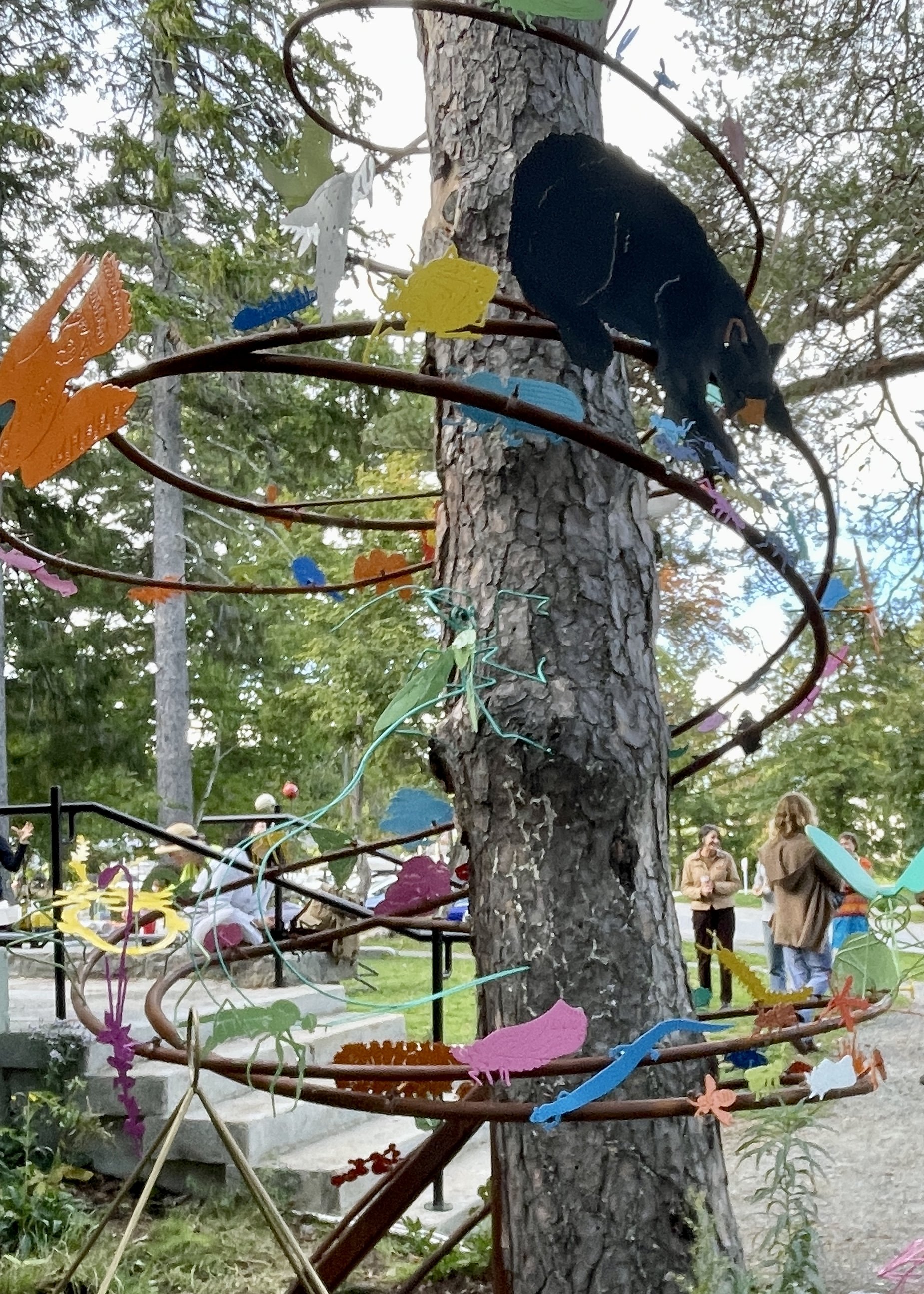A buggy situation
Saproxylic Food Web, by Robert Haskell MPhil ’22, explores the ecosystems of decaying natural materials.
By Rob Levin
A bustling world that’s typically hidden away is the focus of a sculpture newly adorning the front of the George B. Dorr Museum of Natural History. Saproxylic Food Web, by Robert Haskell MPhil ’22, showcases in bright, shiny colors some of the thousands of creatures that inhabit the ecosystems around decaying trees.
“The sculpture is designed to educate people about dead wood and the vast array of creatures that all live on dead wood and depend on dead wood for their survival,” Haskell says. “These are teeny, tiny, crawly things that no one will ever see, so, I’m bringing them out in the open and making them big and colorful.”
The Saproxylic Food Web, Haskell’s thesis for his MPhil degree, details 120 larger-than-life metal bugs circling the wide trunk of a dead red pine that was otherwise destined for the wood chipper. The tree is stabilized by a hidden steel beam anchored to a buried, three-foot concrete footer, which also holds the hundreds of feet of solid COR-TEN steel circling the tree. Haskell estimates the metal infrastructure weighs 4,000-5,000 pounds, and says it is designed to outlast the decaying tree.
“People destroy dead wood wherever they see it, but really it’s the fundamental building block of this hugely important ecosystem. Saving this tree by making a sculpture that will hold it up is really important to the piece.”
Haskell came to COA for a master’s degree after earning a BFA in sculpture from The University of the Arts in Philadelphia. His self-directed path at COA gave him the opportunity to incorporate ecology and science into his artwork in thoughtful and novel ways, he says.
“I spent my time here melding my metalworking and other sculptural practices with biology and ecology and all these different science classes,” he says. “I got to personally work with the professors to see how this knowledge intersects with the sculptures I’m making and how can I really meld them together into something that’s more than the sum of its parts.”




